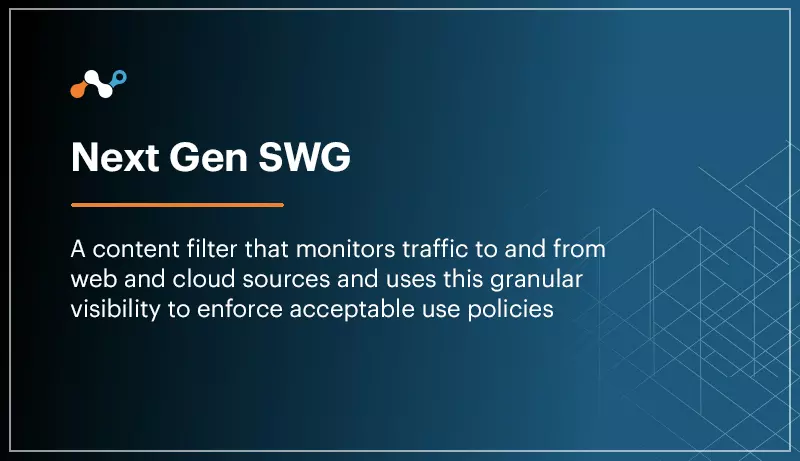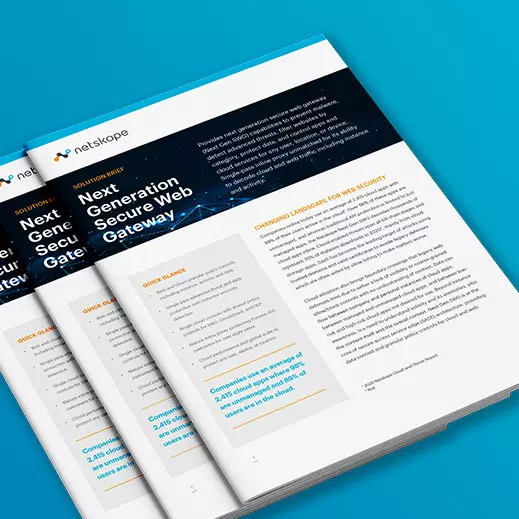As stated earlier, Next Gen SWG cyber security is the next evolution in traditional web proxy gateway solutions, but how exactly do they protect against the modern threat landscape and data risks?
Simply put, traditional web filtering and proxy solutions are no longer effective at safeguarding web and cloud app users or the enterprise from the following:
1. Increasing cloud apps and services, as well as cloud-enabled threats
More than half of web traffic today (53%) is related to apps and cloud services, and more than two-thirds of malware (68%) is delivered from cloud apps versus the web*. Legacy web proxy gateways cannot decode apps and cloud services to detect these cloud delivered threats. All stages of the cyber kill chain are now cloud-enabled, including reconnaissance, weaponization, delivery, and call back communications.
Business units and users continue to freely adopt new apps and cloud services, growing 22% for the first six months of this year where the average company with 500-2000 users accesses 805 distinct apps. Legacy cloud SWG solutions are mostly blind to these growing shadow IT apps and cloud services and less than 3% are managed by IT.
2. Rising data exposure and theft in a cloud-first world
Over 90% of data created in the cloud happened in the last two years and more than 70% of users are mobile and work remotely. The ability to transfer data between company and personal instances of managed cloud apps, or to another personal cloud app instance, plus using webmail and sharing links is an easy task for any user today.
Legacy SWG solutions often lack DLP capabilities, especially for apps and cloud services, web browsers and forms, mobile apps and sync clients.
3. Growing number of remote workers accessing private and public apps and resources
The digital transformation to cloud and mobile is inverting the legacy appliance-based security stack to the cloud to better protect an increasing base of remote workers. Legacy SWG appliances located in offices force traffic hair-pinning with VPNs to central data centers which is no longer sufficient and results in a poor user experience.
Secure access service edge (SASE) architecture unites multiple security defenses into one cloud platform, with one console, and one policy engine resulting in lower total cost of operations. Next Gen SWGs cover five lanes of user traffic to public resources including web, managed SaaS, shadow IT, public cloud services, and custom apps in public cloud services. Private apps and resources within SASE architecture use Zero trust network access (ZTNA) where implicit trust based on location or device is removed. In this new model, any user, any location, on any device is protected by a nearby cloud security services edge with minimal impact on performance.
What makes a Next Gen SWG truly “next generation” is the depth of control, monitoring, and protection for the five lanes of user traffic inspected. A Next Gen SWG goes beyond old “allow/block” policies of web proxies for one-lane of traffic and combines the capabilities of proxies, inline cloud access security brokers (CASB), and data loss prevention (DLP) platforms. This combination delivers a variety of advanced cloud visibility features and capabilities:
- web content filtering with dynamic ratings
- SSL/TLS decryption with cloud performance and scale
- cloud access security broker (CASB) inline functionality to discover, decode and inspect apps and cloud services traffic
- advanced threat protection (ATP) including sandboxing and machine learning-based anomaly detection
- data loss prevention (DLP) for cloud apps and web traffic
- insights, rich metadata context for investigations, detailed reporting, and more.
With the use of a Next Gen SWG, you can monitor behavior for web, apps and cloud services, set granular acceptable use policies, invoke adaptive policies based on app risk, user risk, activity, and data sensitivity, and provide real-time user coaching to safer alternatives and away from risky apps. Not only does this improve your security in the cloud, but it also improves user experiences by avoiding blanket bans on certain actions and devices. Granular controls and inline visibility of a Next Gen SWG helps contextualize user and data activity so adaptive policies can guide users while reducing risk and protecting data without interfering with legitimate work practices.
Blog: Where CASB and SWG Are Headed
What’s the difference between a Web Filter, a SWG, and a Next Gen SWG?





 Back
Back 
























